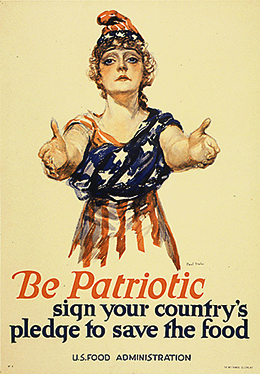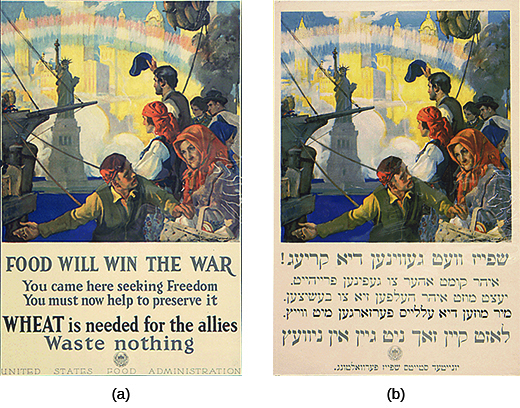| << Chapter < Page | Chapter >> Page > |

Wilson also created the War Industries Board, run by Bernard Baruch, to ensure adequate military supplies. The War Industries Board had the power to direct shipments of raw materials, as well as to control government contracts with private producers. Baruch used lucrative contracts with guaranteed profits to encourage several private firms to shift their production over to wartime materials. For those firms that refused to cooperate, Baruch’s government control over raw materials provided him with the necessary leverage to convince them to join the war effort, willingly or not.
As a way to move all the personnel and supplies around the country efficiently, Congress created the U.S. Railroad Administration. Logistical problems had led trains bound for the East Coast to get stranded as far away as Chicago. To prevent these problems, Wilson appointed William McAdoo, the Secretary of the Treasury, to lead this agency, which had extraordinary war powers to control the entire railroad industry, including traffic, terminals, rates, and wages.
Almost all the practical steps were in place for the United States to fight a successful war. The only step remaining was to figure out how to pay for it. The war effort was costly—with an eventual price tag in excess of $32 billion by 1920—and the government needed to finance it. The Liberty Loan Act allowed the federal government to sell liberty bonds to the American public, extolling citizens to “do their part” to help the war effort and bring the troops home. The government ultimately raised $23 billion through liberty bonds. Additional monies came from the government’s use of federal income tax revenue, which was made possible by the passage of the Sixteenth Amendment to the U.S. Constitution in 1913. With the financing, transportation, equipment, food, and men in place, the United States was ready to enter the war. The next piece the country needed was public support.
Although all the physical pieces required to fight a war fell quickly into place, the question of national unity was another concern. The American public was strongly divided on the subject of entering the war. While many felt it was the only choice, others protested strongly, feeling it was not America’s war to fight. Wilson needed to ensure that a nation of diverse immigrants, with ties to both sides of the conflict, thought of themselves as American first, and their home country’s nationality second. To do this, he initiated a propaganda campaign, pushing the “America First” message, which sought to convince Americans that they should do everything in their power to ensure an American victory, even if that meant silencing their own criticisms.
At the outset of the war, one of the greatest challenges for Wilson was the lack of national unity. The country, after all, was made up of immigrants, some recently arrived and some well established, but all with ties to their home countries. These home countries included Germany and Russia, as well as Great Britain and France. In an effort to ensure that Americans eventually supported the war, the government pro-war propaganda campaign focused on driving home that message. The posters below, shown in both English and Yiddish, prompted immigrants to remember what they owed to America ( [link] ).

Regardless of how patriotic immigrants might feel and act, however, an anti-German xenophobia overtook the country. German Americans were persecuted and their businesses shunned, whether or not they voiced any objection to the war. Some cities changed the names of the streets and buildings if they were German. Libraries withdrew German-language books from the shelves, and German Americans began to avoid speaking German for fear of reprisal. For some immigrants, the war was fought on two fronts: on the battlefields of France and again at home.

Notification Switch
Would you like to follow the 'U.s. history' conversation and receive update notifications?